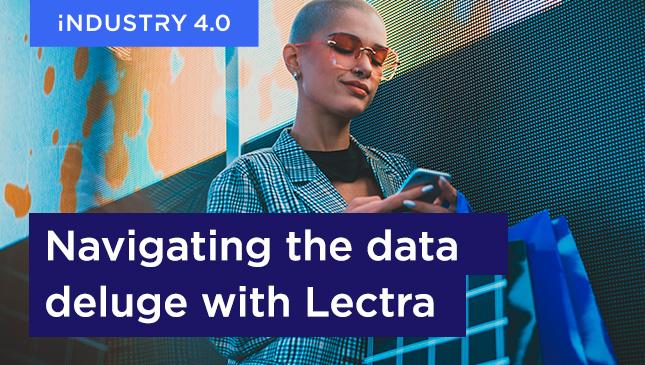Searching for solutions to the industry’s most pressing challenges
From the race to sustainability to the never-ending sprint to keep up with changing consumer demands, fashion companies are under constant pressure to innovate faster, better and smarter. Let’s examine a few of the industry’s most pressing challenges and then examine how companies can use data to improve trend forecasting, consumer behavior and competitor analysis, as well as collection development strategies.
Sustainability is serious business
Many fashion companies have made sustainability a major part of their marketing in order to capitalize on growing interest in the issue. However, as more governmental and consumer watchdog groups push for legislation to combat greenwashing, fashion companies must be sure that they can back up claims with accurate data or they risk not only reputational damage but also fines or legal action.
Constantly evolving consumer demand
Increasing inclusivity in the fashion industry is a large amount of fragmented demands. This means companies are providing more non-standard SKUs more often, which puts pressure on forecasting and inventory management.
Shorter and shorter trend cycles are also making it difficult for retailers to find the time to analyze data and act on it. The rise in microtrends require brands to adapt and adjust their assortment quickly or risk being left behind.
Seamless omnichannel experience
While the popularity of shopping at brick-and-mortar stores has experienced a post-pandemic resurgence, shoppers are moving between the online and offline worlds more seamlessly than ever before. According to McKinsey & Company, 60% of shopping journeys now have a digital component. Selling the right product on the right channel is essential for optimal profitability.
The average omnichannel customer buys 70% more than an offline-only shopper. Link
Demystifying data with Lectra solutions
Our newest solutions capitalize on data analytics, artificial intelligence and other Industry 4.0 technologies to help fashion companies manage and benefit from the multitudes of data available to power performance and profitability.
Volume: Faster competitor analysis with artificial intelligenceAI and swift, high-volume nesting in the cloud
Retviews capitalizes on the power of AI to help fashion brands and retailers aggregate and analyze the massive volume of data on their competitors’ pricing, assortment and discount strategies, in real time.
Using AI-powered image data analysis, Retviews crawls more than 4000 e-commerce platforms, marketplaces and brand e-shops to provide users with valuable insights into the product assortment and discount strategies of their competitors. Rather than taking three to four weeks to conduct benchmarking, companies can do it in only a few minutes with Retviews.
Shoppers' desire for more variety is inciting fashion companies to release collections more frequently. Flex Offer by Lectra is a cloud-based solution for suppliers grappling with the demands of a high-volume nesting process. Cloud-based nesting provides companies with unlimited processing power and increased capacity levels to manage more frequent, more complex orders from a larger number of contractors with greater flexibility and efficiency.
Veracity: Granular traceability of textiles with digital token technology
If fashion brands want to achieve sustainability objectives, they need to establish full line of sight into how their products are manufactured. Textile Genesis uses digital coins to track the flow of physical goods, from fiber to retail.
Each digital coin, or Fibrecoin, is a digital twin for material at its point of origin. So, for example, one kilogram of fibers becomes one Fibrecoin. At each stage of the transformation process—from fiber to yarn, yarn to fabric, fabric to finished product—the tokens are passed along the chain, creating full digital traceability.
Velocity: Better collaboration and increased agility with the cloud
A market that requires speed, care and precision necessitates an accelerated, integrated development and production process. Kubix Link capitalizes on the cloud to facilitate teamwork and sharing from a centralized data repository. Working in the cloud is the best way to gather and manage data with a high degree of reactivity. Allowing all teams a 360° vision facilitates collaboration and decision making, as well as sharing of collection, analysis and interpretation of sales data.
With Kubix Link, companies can develop collections faster, jump on trends quickly and manage different types of collections, such as fast-track or never-out-of-stock (NOOS).
When it comes to sharing product development information with suppliers, Modaris and Gerber AccuMark also deliver the collaboration capabilities companies need. The two solutions’ interoperability capabilities enable seamless sharing of data throughout the supply chain, helping brands and suppliers work together better.
Variety: Master material constraints and e-commerce sales with digitalization and dynamic data integration
To meet consumer demand for more product variety and sustainability, fashion companies need to find innovative ways to produce garments with technical, artisanal or ethically sourced fabrics. The variety and volume of materials and their associated data makes the production process even more complex. Fashion On Demand by Lectra’s integrated digital fabric management simplifies the process, by compiling the multiple data associated with a material, associating it with appropriate nesting and cutting parameters, and then sending that information directly to the cutting room.
Once garments are produced, it is essential to provide a seamless online experience for consumers by providing them with the data they need at all touchpoints. However managing the multitude of inventory on marketplaces, monitoring what product is selling at what price on which site, and contending with changing site requirements is complex and time consuming.
Neteven helps fashion companies reach the right consumer with the right information, with a minimum of manual work, using data mapping and dynamic inventory and price updates. Neteven’s analytics dashboard also enables companies to use the data they gather to better understand their customer and optimize their digital offer.
Value
Lectra’s solutions help fashion companies achieve the all-important fifth V: Value. Our solutions use fashion-specific advanced technology to help companies connect the data dots. As data generation continues to grow, we will continue to develop solutions that help companies make better-informed decisions, more precisely evaluate past performance and more accurately predict future outcomes.

